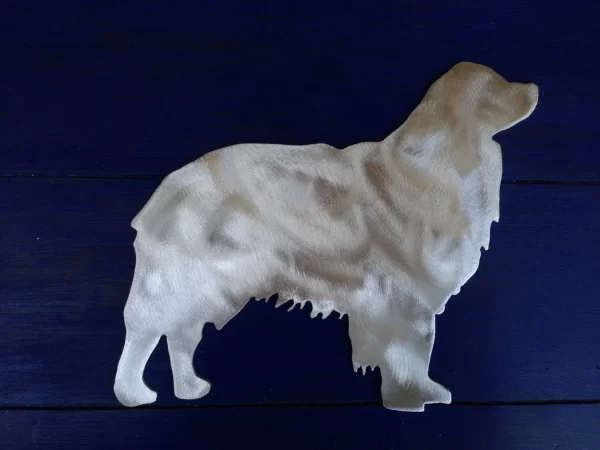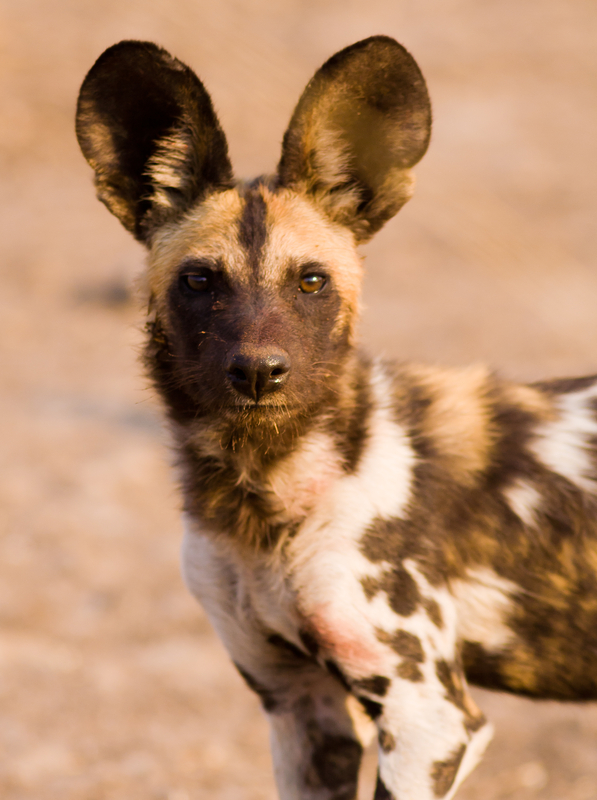
If you were playing Jeopardy, your winning response would be, “What is tweed?”
The category would be “Australian Shepherd Markings and Color,” and the late Alex Trebeck would say, “This color usually has three or four shades in moderate sized splotches on a pale background. It is caused by the longest of the SINE insertions, Mh.”
Okay, Alex probably wouldn’t have said it quite that way. The more succinct clue would be, “A variety of merle, this is a color pattern found in Australian Shepherds.”
Though the author knew that it was called “harlequin” by some breed owners, the writer of the first scientific article to describe the pattern in Aussies gave it a different name to avoid confusion with the Harlequin pattern in Great Danes. His first choice to describe the pattern would have made another excellent Jeopardy question:
Q: Tweed patterned Australian Shepherds have this in common with certain mice.
A: What is “splotch?”
Splotch, generally used to refer to an odd shaped spot or stain, is the name of a color occurring in mice. It was the aforementioned author’s first choice, but as it was already being used to describe a mouse color, his next choice was “tweed,” or what the scientific community uses for shorthand: “Tw.”
Aussies come in solid and merle coat patterns, and one variation in the merle pattern is tweed. It is a modifying merle that turns diluted parts of the coat, the ones that would be grey in a normal merle, or light brown in a liver, into diverse shades of tan, gray, and brown. Some people liken these marking as being quite similar to that of an African Wild Dog.

African Wild Dog © Donvanstaden | Dreamstime
To be clear, the Australian Shepherd’s AKC standard refers to four accepted coat colors: From the standard: Color: Blue merle, black, red merle, red-all with or without white markings and/or tan (copper) points, with no order of preference. The hairline of a white collar does not exceed the point of the withers at the skin. White is acceptable on the neck (either in part or as a full collar), chest, legs, muzzle underparts, blaze on head and white extension from underpart up to four inches, measuring from a horizontal line at the elbow. White on the head should not predominate, and the eyes must be fully surrounded by color and pigment. Merles characteristically become darker with increasing age. Disqualifications – White body splashes, which means white on body between withers and tail, on sides between elbows and back of hindquarters in all colors.
Note that the standard does not mention “tweed” or even harlequin, and our sense is that they may be controversial patterns within the breed. Furthermore, the standard mentions that white body splashes in certain areas of the body are DQs, and at least one photo we’ve seen of a tweed Aussie show a dog that (to us, anyway) seems to have white splashes. As always, we defer to the experts – the breed owners and breeders.
To repeat, tweed, or Tw, causes many shades of the merle pattern, typically three or four medium sized splotches on a pale background. We’ve read that blue merle versions are usually easy to spot, not so much with red merles. Non-merle Aussies can carry tweed, but as they aren’t merles, one can’t tell just by looking at them whether they have the gene or not.
In a 1985 abstract written by An autosomal mutation is responsible for the modification of merle coat color (previously indicated to be due to a transposable DNA element) to the tweed merle pattern in the Australian shepherd dog. The tweed merle pattern consists of color patches that have a greater range in the intensity of the dilute patches and tend to be larger than the patches of non-tweed merle. It has no action on non-merle dogs.
To our knowledge, the first reported tweed was a dog named “Ritter’s Lass,” and she produced at least one puppy – a daughter – with an obvious tweed pattern.
We mention this pattern/color in the spirit of education, and nothing written should be construed as an endorsement, nor as tacit approval or disapproval. Again, we’d like to hear the opinions and knowledge of Aussie owners/breeders on the topic.
Image: Australian Shepherd Metal Art made by Peter and Wendy Hudson, owners of ScreenDoorGrilles is available for purchase here
